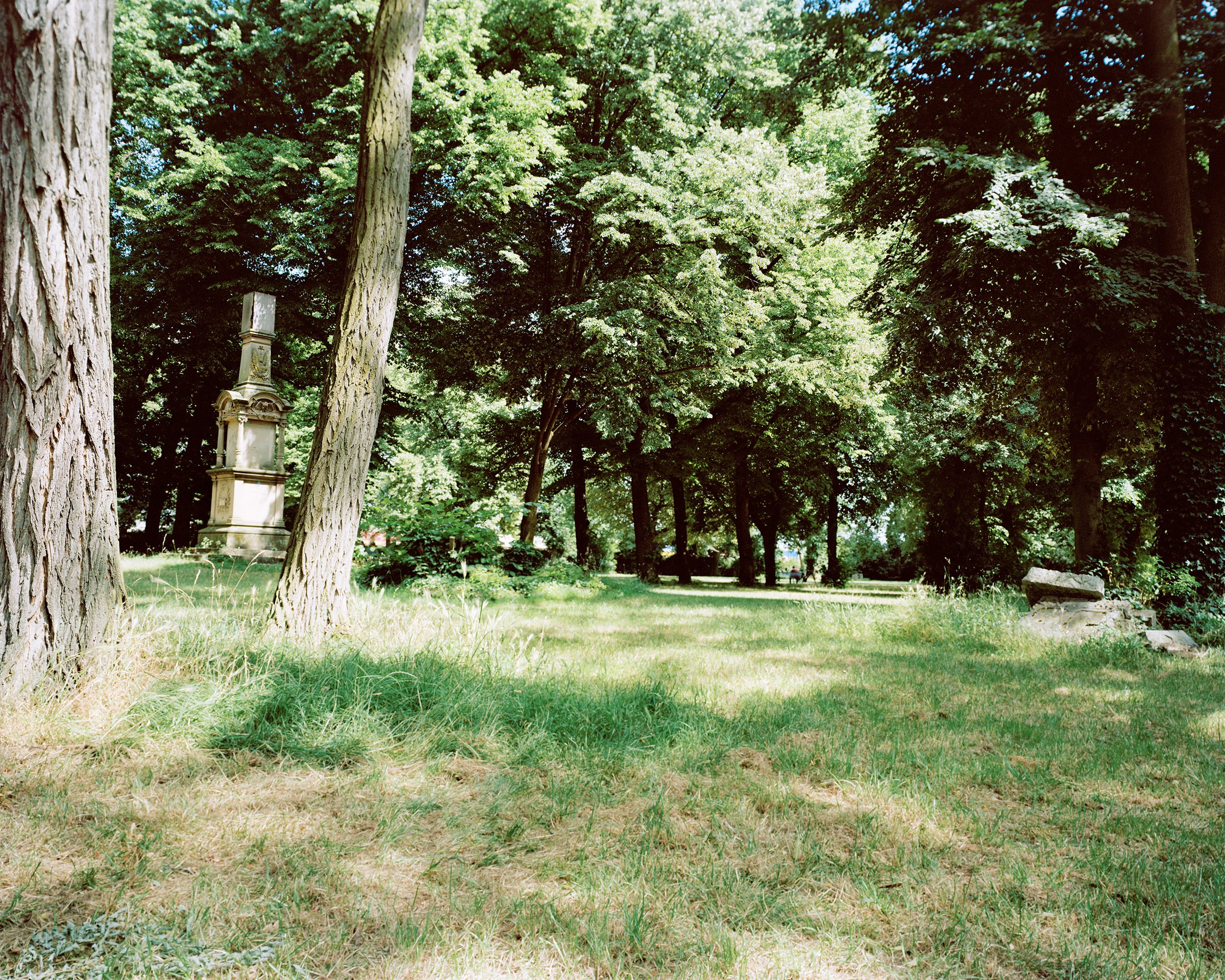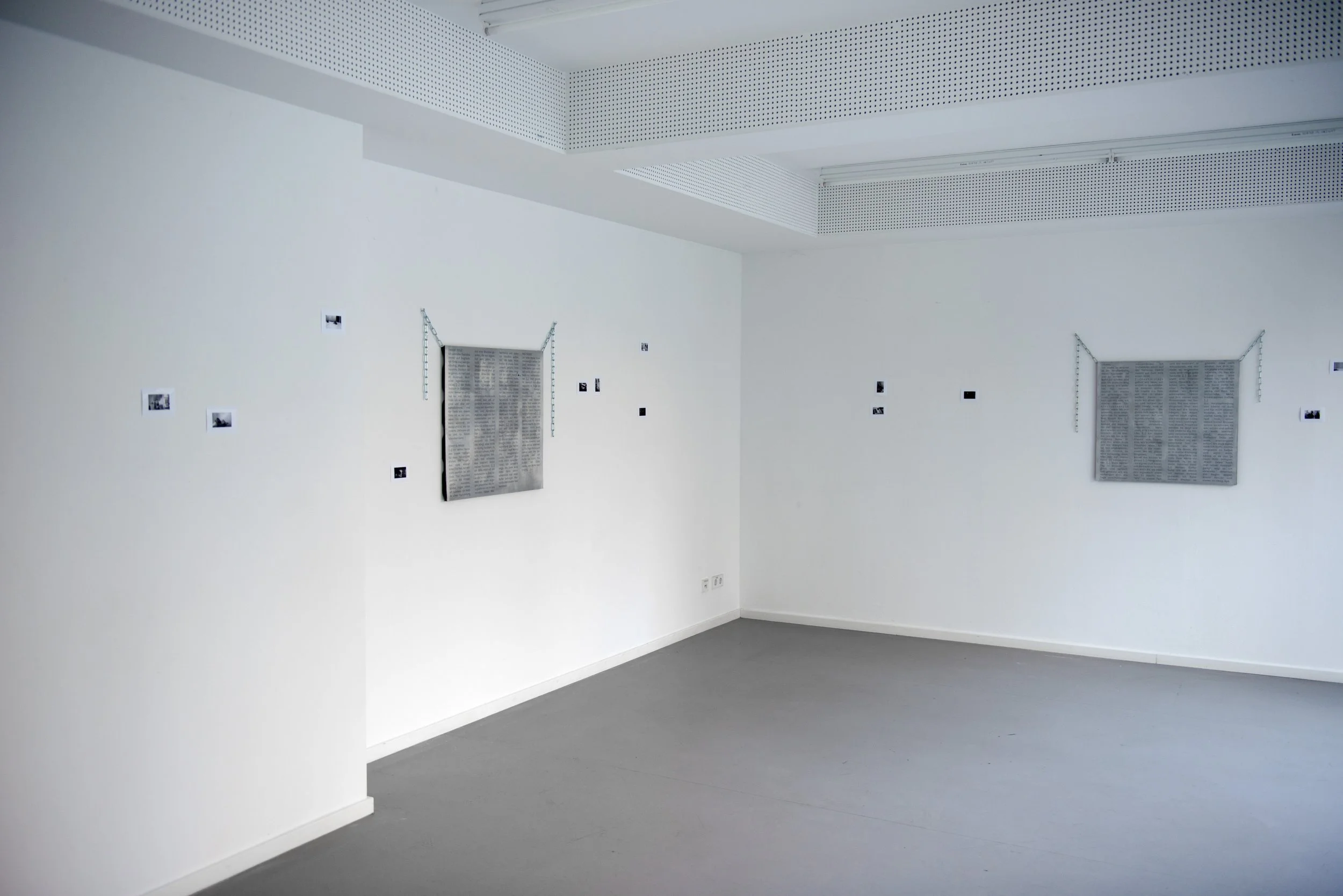Portfolio
Low Tide, work in progress (since 2024)
photography, video
In summer, the population of Lloret de Mar quadruples from 40,000 to 160,000. The city seems to have been built for northern European holiday guests, but not for those who live here. In winter, the streets are empty, time seems to stand still, almost everything is closed. This work is dedicated to the people who live in a city forced into hibernation, their everyday lives and how they see those whose holiday destination they call home.
Most people have been on holiday before - we see our holiday destinations from the perspective of our own needs. However, despite our mostly short stays, we leave a lasting impression and traces. In the work ‘Low Tide’, I investigate (mass) tourism on the Spanish Costa Brava and in the development of the project I ask the question: What impact do waves of tourists have on the social structures in tourist destinations? The project is realised in collaboration with different people from Lloret de Mar who take me on walks, sharing their very own perspective on their home town.
Songs of Sanity, 2023
14 photographs (80x100cm, Inkjet-Print)
1 photo wallpaper (218x270cm)
Audio (25 Min.)
Myths about female presenting people exaggerating their pain, being neurotic, or even “hysterical“ persist to this day. Since ancient times, “the woman“ was considered imperfect and insufficient – because of their deviation from the male-defined body. As a result, the idea emerged that the female-read biology was determined by excessive emotions. This has a particularly serious effect on gynecological disorders and treatments, which for centuries have been mired in misunderstanding and shame, leading to speechlessness and the creation of harmful myths.
In this work, seven people recount their experiences undergoing gynecological treatments. They report on power abuse, medical gaslighting, and feeling unheard. The exhibition challenges the hierarchies in medicine and draws attention to the need for a patient-centered and compassionate treatment.
The protagonists chose not only the location but also their position in the picture. With the help of a remote shutter release, they decided on the moment at which the picture was taken. This makes the camera visible in the picture. The empty spaces in turn make it clear that any experience could have happened to any person. The interviews are not assigned to the images, creating a kind of an fragmented archive.
Installation view: Glasmoog – Raum für Kunst und Diskurs, Cologne, 2023
untitled, 80x100cm, Inkjet-Print
untitled, 80x100cm, Inkjet-Print
untitled, 80x100cm, Inkjet-Print
untitled, 80x100cm, Inkjet-Print
Installation view: Glasmoog – Raum für Kunst und Diskurs, Cologne, 2023
It Is the Water Flowing that Makes the Sound, 2022
14 photographs (different sizes, Inkjet-Prints)
Walltexts (handwritten)
This project views the city as analogous to the human body and it understands the urban space as a living organism that digests. It shows that a key issue of the climate crisis is our detachment from our very own bodies and nature.
The protagonist of this work is the river Rhine. The photographs show structures that extract the Rhine‘s bank filtrate, transport it under the city, clean it, and release it back into the river. In Cologne, drinking water is obtained from groundwater, which is also fed by Rhine water. The treated wastewater is released back into the Rhine without removing residues from medications. Due to the ongoing drought, the Rhine is additionally affected by recurring low water levels. Unlike many places in the Global South, in Western culture we view rivers as inanimate objects: Infrastructures that serve a purpose. We thus fail to recognize that they are part of a supra-regional metabolic organism. If we apply this idea to the Rhine, it would be a living organism to which the city of Cologne parasitically docks, extracts, pollutes part of the river water, and then incompletely purifies it in an artificial kidney, the sewage treatment plant, and returns it to the river.
The difficulties in the understanding of the climate crisis is rooted in its invisibility and the time difference between cause and effect. Therefore, the photographs document the infrastructure that’s needed for the water supply and waste water discharge while the literary texts function as an amplification of the photographs. The interplay between photography and text is an exploration of the medium and tries to highlight what photography is able to show – and what not.
Sewage Reservoir, 60x80cm, Inkjet-Print
Fresh Water Pump, 40x60cm, Inkjet-Print
Installation View: Goethe-Institut, Paris, 2022
[insert title], 2021
20 photographs (4,5x7cm, Inkjet-Prints)
4 text panels (68x74cm)
For this series, I portrayed various artists who are at the beginning of their artistic careers. The photographs show the artists in their (working) day-to-day life, they give an insight into a professional world that is strongly influenced by clichés, such as that of the (male) artist as a genius or depressive eccentric. Again and again I was confronted with this cliché, but I could not identify with it. While I was photographing the others, I began to write down what I felt, what I thought, and what was happening. Large aluminium plates were used to create text panels that form the core of the work. The photographs provide a frame for the texts. Through the photographs, which show an in-between, and my texts, this work became a very personal exploration of me and my role as a photographer.
Installation view: case – Projektraum für Fotografie, Cologne
Fragment of the text on wall panels:
I eat breakfast alone on the terrace, Cédric smokes a joint on the sofa. [...] In the afternoon we go out, we want to go to a few galleries. I take a photo of him in a white room, he stands in front of a display case and looks at his cell phone. It is unclear to me what he is actually doing there the whole time. Reacting to Instagram stories maybe, replying to people. Double-click, hearts, a like for a like. [...] In the evening, we visit a friend of Cédric‘s, Eric. We drink two bottles of wine. They want to go to the city center. Neither of them knows exactly where we‘re going. [...] Photography is a great way to create distance, even where you don‘t actually have any. It turns the „we“ into „me and the others“. It‘s a really good technique in situations that I‘m not so comfortable with. [...] An interesting dynamic develops between us, like in a performance, we turn in circles around each other. Cédric and Eric pull rose blossoms onto their faces, which hang over the fence from a front garden onto the street. The roses smell of nothing, the photo of this scene will become my favorite photo of this project. [...]Cédric, 4,5x7cm, Inkjet-Print
Camille, 4,5x7cm, Inkjet-Print
dead/death, 2019
15 photographs (15x20cm, Baryt-Papier)
Interviews
We humans are united by two things: We are born and we die. Our perspective on death is shaped by our experiences, beliefs and cultural backgrounds. In this work, I spoke with five people about what is frightening but so relevant: their own death. Photographs freeze living moments, death is inherent to them. Medium format analogue photography slowed down the process, opening up a conversational space for shared reflection. Only the occasional click of the camera reminded the people talking of the surroundings: a dark photo studio. The three selected portraits per person are merely proof that a conversation took place. Whoever wants to know what was said has to read.
Installation view: case – Projektraum für Fotografie, 2019
Marcos, 15x20cm, Baryt-Paper
Tariq, 15x20cm, Baryt-Paper
Berthoise, 15x20cm, Baryt-Paper


























